Going Home: Six hundred Pig-nosed Turtles return to their native habitat
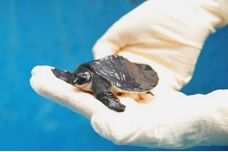
After spending 8 months under veterinary care at Kadoorie Farm and Botanic Garden (KFBG), 609 Pig-nosed Turtles (Carettochelys insculpta) were returned to their native habitat and successfully released into the Maro River in Indonesian Papua, on 7th October 2011.
The repatriated turtles were part of a consignment of 785 individuals, that were smuggled into Hong Kong and were confiscated by the Agriculture, Fisheries and Conservation Department (AFCD) on 12th January, 2011. The turtles were believed to have been caught from the wild in Indonesia, and the shipping documents also suggested this origin.
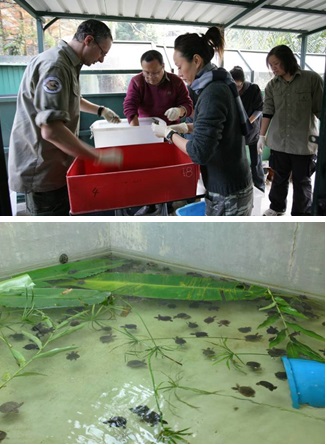
(Below) One of the temporary holding facilities for the juvenile turtles.
SMUGGLED HATCHLINGS
The turtles were transferred to the Wild Animal Rescue Centre at KFBG for care and temporary holding. The hatchlings were only 10 cm long when they arrived (adult turtles can grow up to about 50 cm body length and weigh 30 kg). Many were underweight, considering the poor conditions in which they were shipped. Fortunately, 609 Pig-nosed Turtles were able to survive and were eventually set free in Indonesian Papua.
EXPLOITED BY TRADE
The Pig-nosed Turtle, also known as the Fly-River Turtle, is an almost entirely aquatic animal, the females only leaving the water to lay eggs on sandy river banks. Across their natural range in Indonesia and Papua New Guinea, they are un-sustainably harvested for food and the international pet trade. In 2005, the species was listed in Appendix II of the Convention on International Trade in Endangered Species of Wild Fauna and Flora (CITES), to protect endangered species from over-exploitation through international trade restrictions.

In Hong Kong, it is fairly easy to find young Pig-nosed Turtles for sale in the pet shops in Mong Kok. They are popular pets due to their attractive appearance and behaviour - a pig-like nose, and flipper-like limbs which resemble a marine turtle. Pet shop owners are required by law to obtain a licence to sell these turtles. Due to the growing demand for such turtles as pets, they are being collected from the wild, and, earning high profits for the traders.
With all these threats, the wild populations are becoming more fragile. Turtle specialists have undertaken surveys, and the Pig-nosed Turtle was categorized as Vulnerable (VN) in the International Union for Conservation of Nature (IUCN) Red List, in the year 2000. Continued removal of turtles from the wild will lead to a drastic decline in numbers of the wild populations.
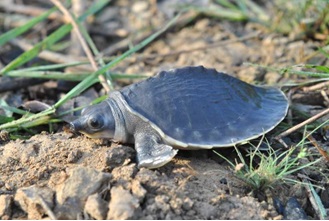
A COLLABORATIVE EFFORT
In the hope of securing a future for the Pig-nosed Turtle, a decision was made to return the surviving turtles to their natural range in Indonesian Papua. With assistance from the staff of International Animal Rescue (IAR) Indonesia, the Wildlife Conservation Society, and, the Ministry of Forestry of the Republic of Indonesia, a location upstream of Merauke, Indonesian Papua, was identified as suitable for the release. On 5th October, 2011, the little survivors left KFBG and were loaded onto a plane to start their long journey from Hong Kong to Indonesian Papua.
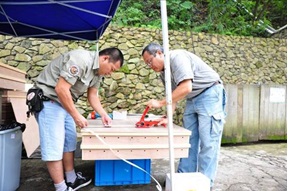
LOCAL INVOLVEMENT & COMMITMENT
The release took place two days later, on 7th October, 2011, and involved full participation by the local villagers from the nearby village of Bupul, which is on the border of Papua New Guinea.
Prior to the release, the village children were taught about the story of the turtles and the importance of protecting the local wildlife. Then, the village pastor provided a sermon, whose theme was related to care for the environment and sustainable use of resources.
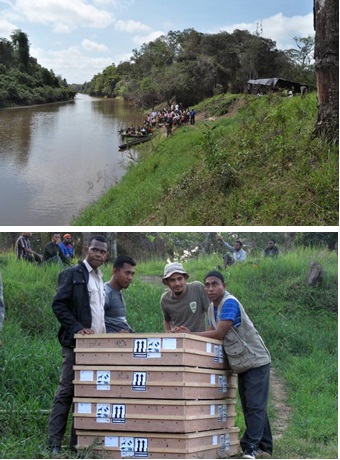
After that, the release began. The village head and most of the school children were involved. They gently put the turtles into the river, returning them to where they naturally belong.
The village headman of Bupul Village who was familiar with the local fauna, last saw a wild Pig-nosed Turtle in the river 30 years previously and there was hope that this release of juvenile turtles would see the return of this species to the area.
The people of Bupul and two other villages down river have vowed to protect the turtles and also provide the local Forestry Officers with updates if they come across Pig-nosed Turtles in the river.
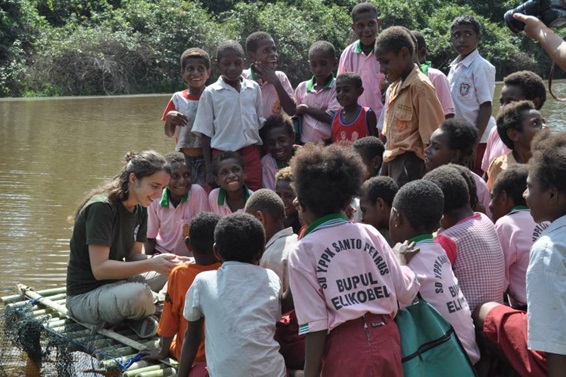
Dr. Karmele Llano Sánchez, Executive Director of International Animal Rescue Indonesia, talks to local children about the turtle story and the conservation effort.
A SUCCESSFUL OPERATION
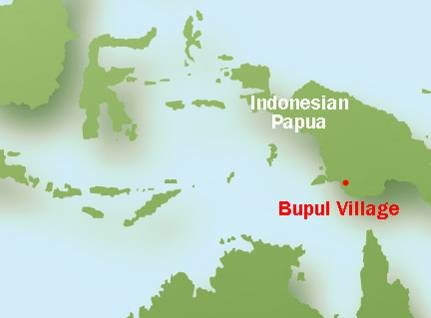
The whole repatriation operation has been considered a success in many ways and not least through the partnerships and collaborations that have developed between the Hong Kong and Indonesian Governments, Conservation NGOs, commercial airlines and the village of Bupul, all with a joint desire to correct some of the damage which over-exploitation of our natural resources has caused and to see a once common turtle species return to this stretch of the Maro river.
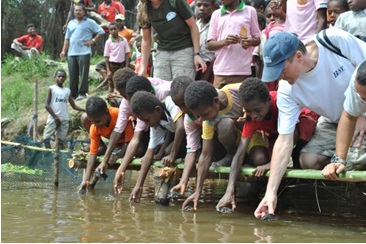
This heart-warming story has attracted the interest of media from all over the world. It has been reported on TV, in newspapers and on websites. At least 50 different media groups covered the story, and the message of conserving the turtles and their natural surroundings.
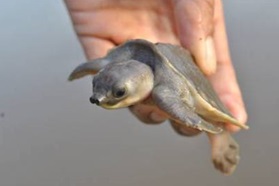
BEYOND THE STORY
Today, habitat loss, un-sustainable collection for food and the wildlife trade are the major threats faced by wild turtles. 'You can help save these endangered animals by not consuming turtle food products or buying turtles to keep as pets,' explained Dr. Gary Ades, Head of Fauna Conservation Department. Mr. Alfred Wong, Endangered Species Protection Officer of AFCD, also reminded people to pay more attention when buying wildlife or their products to ensure they are from legal sources. ‘This will help protect endangered species and safeguard the sustainability of our precious natural resources,’ Mr. Wong added.
If you find any illegal wildlife trade activities, please report them to the Agriculture, Fisheries and Conservation Department at (852) 2150 6978 or espint@afcd.gov.hk.

Acknowledgement
We would like to thank everyone that helped to make this repatriation project possible, in particular the International Animal Rescue (Indonesia), HKSAR Government’s Agriculture, Fisheries and Conservation Department, the KKH (Konservasi Keanekaragaman Hayati) and BKSDA (Balai Konservasi Sumber Daya Alam) of the Indonesian Government, Wildlife Conservation Society Indonesia, Cathay Pacific Airways and, last but not least, the villagers of Bupul.

